The director and the writer of “Seven” are back in the saddle again for this wild and disgusting short movie.
Genre: Fantasy/Period
Premise: A ship sailing through the ocean is boarded by a giant man-eating crab that demands to be taken to a highly populated island where it can feast to its heart’s content.
About: David Fincher! Andrew Kevin Walker! You can watch this short film right now on Netflix’s 3rd season of Love, Death, and Robots!
Writer: Andrew Kevin Walker (adapted from short story by Neal Asher)
Details: 21 minutes
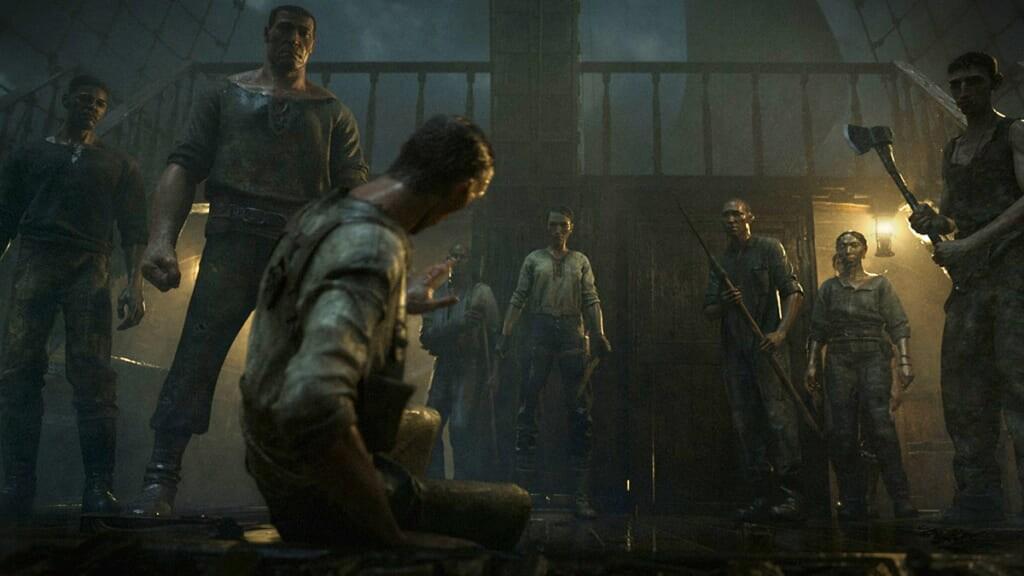
You wonder why it took these two – Walker and Fincher – so long to reconnect. They’re making that assassin film, “The Killer,” with Michael Fassbender. I guess this is their warm-up before the big match. And boy what a warm-up it is.
I haven’t watched all of the Love, Death and Robots episodes from Season 3 yet. But what I can tell you from watching this season’s current promotional title, Jibaro, and episodes from previous seasons, is that the creators continue to make the same mistake, which is that they use the medium as a way to play with toys, not tell stories.
Jibaro, which follows a group of 17th century soldiers who get attacked by an evil water nymph, isn’t bad. But all you have to do is watch Bad Traveling to see why Fincher is so far ahead of these other guys. Sure, Fincher likes to play with toys as well. But he understands that, at the end of the day, if we aren’t emotionally connected to the characters, and there isn’t a compelling story at the center of the movie, and that story isn’t structured properly to build suspense, engage in conflict, then pay off everything that’s been set up, then you’re just @$%&ing around.
This latest story of his plays with one of the most powerful tools available to a storyteller. I’ll tell you what that is right after I summarize the plot…
Presumably set several centuries ago, a sea ship is attacked by a giant crab-like monster. After killing the captain of the ship, the crab burrows its way into the ship’s hull. The ship members draw straws on who has to go down there and face this thing to figure out what it wants.
A Machiavellian crew member named Torrin draws the short straw, goes down to the crab, who, through the voice of one of the killed crew members, explains that he wants to be taken to a specific island that is full people so that he can feast to his heart’s desire.
Torrin, who has now claimed captain’s status, relays this demand to the rest of the crew but suggests an alternative. They take Crabby to a decoy unpopulated island, one he’d be none the wiser about, to save the innocent people of the first island.
The crew isn’t sure. If the crab figures out what they’re doing, he might eat all of them up. So Torrin decides to put it to a silent vote. He hands out pieces of paper and everyone anonymously votes which island to send the monster to. Torrin then informs them that he tricked them, secretly marking each scrap of paper so that he knew who the cowards were, aka, the people voting to send the crab to the populated island.
Torrin shoots those two cowardly voters dead.
The trip to their destination will take a day and a half, which poses a big problem. Crabby is VERY HUNGRY. He needs feeding every few hours. Which means that decisions will have to be made on which members get picked for feeding time. As the trip draws to a close, Torrin will make a dangerous decision that will determine who gets off this boat alive: him, or that darn crab.
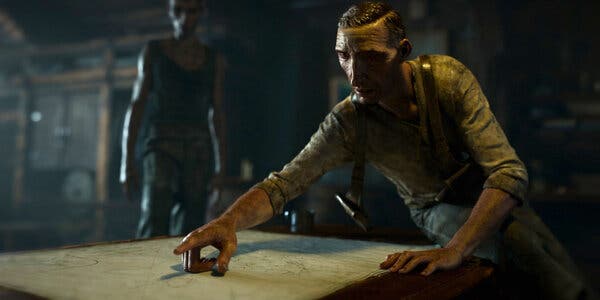
This was a REALLY good short film, guys.
All short film directors and writers need to study it because, like I said, it wasn’t just about the toys. It’s about a great story with a clear beginning (set up the problem that leads to the objective), middle (complications arise which make achieving the objective difficult), and end (they either achieve the objective or fail).
But what really stands out to me about this story is the focus on a very powerful writing tool: CHOICE.
You want to put your characters into multiple situations where they have a CHOICE to make. The more difficult the choice is, and the bigger the stakes are attached to that choice, the more entertaining that plot point is going to be.
One of the first CHOICES in Bad Traveling is, who’s going to go down and see what the crab wants? Note how big the stakes attached to this choice are. Whoever gets picked to go down there is very likely going to be killed. They just saw this thing massacre half their crew.
Next up, they learn that this thing needs to be constantly fed. Which means they need a body to feed to it right away. That’s the next choice. Who’s going to be the meal? Note how the stakes to this choice are even higher than the previous one! Cause this person is definitely dying.
Next up, we have the choice of which island to go to – the populated or unpopulated one. This choice brings with it more complexity. The decoy island is further away. Which means more crew members will have to be fed to this monster if they choose this route. Also, there’s a moral twist to the choice. You can save yourself but kill others by choosing the populated island. Or save others and risk your life if you choose the decoy island.
That’s when “choice” becomes really interesting in storytelling – when there aren’t easy answers, when there are more than a single element attached to the choice.
I’m telling you, if you want to write a good scene in the screenplay you’re working on right now, come up with a scenario where your characters have to make a difficult choice and there are high stakes attached to that choice, and everybody’s decision affects everybody else. You’re getting a lot of storytelling bang for your buck out of that scenario.
In addition to Bad Travelling being a great lesson on “choice” in writing, it’s just a great script in general. One of the ways I can tell that the writer did his job is when we encounter a common scenario and the writer has found a way to explore that scenario beyond its obvious outcome.
For example, when they take the votes for which island to go to. Traditionally, these scenes end with the orchestrator reading the votes and informing everyone else of the decision. But Andrew Kevin Walker took this scenario one step further by having Torrin inform everyone that he’d secretly marked each piece of paper to weed out the cowards. Any time you can take a trope and expand it into something new or unexpected, you’re doing your job as a screenwriter. If you’re always taking those moments to their expected logical conclusions, your writing is never going to shine.
The team even got the basics right. There’s a heavy ticking time bomb here since this monster needs to be fed. Every delay has the potential to take another life. Which means the story moves along quickly. They also introduce complications. No pursuit should ever be simple. So at one point, the crew tries to kill the captain, which he fights off and survives.
All around, this is a great short film on its own merit, as well as a great short for screenwriters to study. I loved it.
[ ] What the hell did I just read?
[ ] wasn’t for me
[ ] worth the read
[x] impressive
[ ] genius
What I learned: The double-twist. Why get single mileage out of a twist when you can get double mileage! Spoilers: Torrin reveals after the vote that he tricked the crew to weed out the cowards. He then kills the two cowards. Later, when Torrin is with his closest confidant, he tells him he lied about the voting. It wasn’t two crew members who voted for the cowardly option. It was all of them. He then pushes the confidant (the last crew member besides himself) through a hole on the deck, where he falls into the crab’s feeding room.
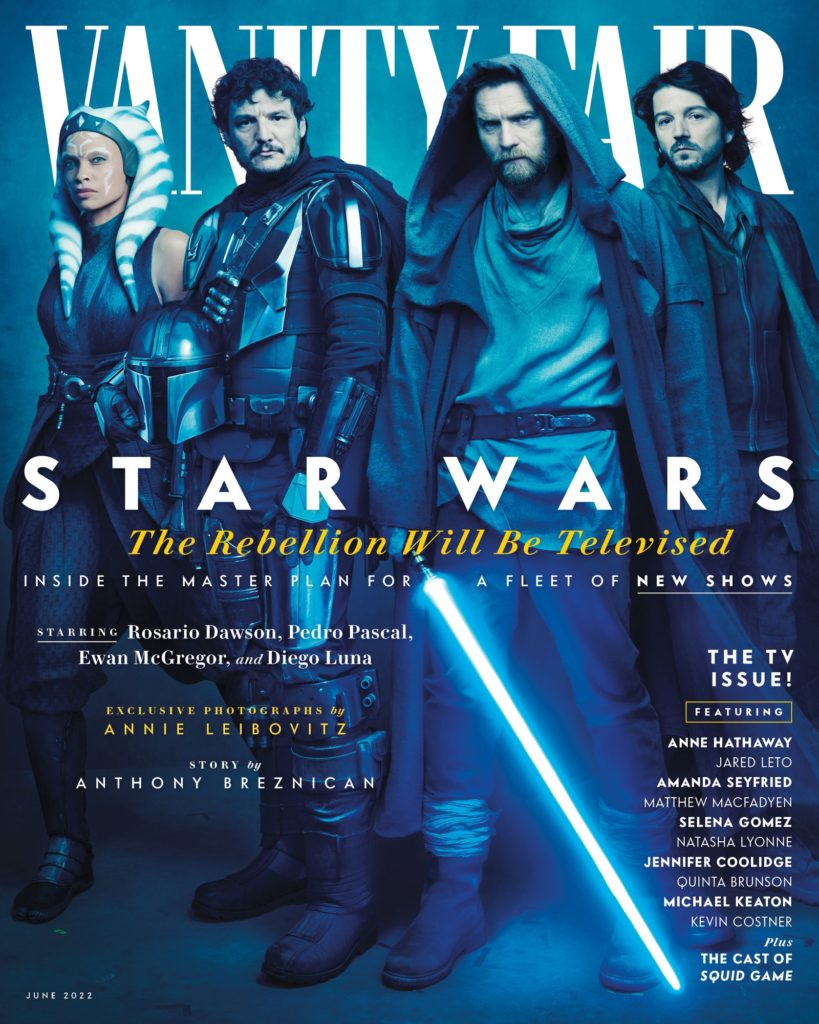
As we ramp up to next week’s debut of the Obi-Wan Kenobi show, the Star Wars heads have reluctantly started doing press to build excitement for the Disney Plus series. I say “reluctantly,” because Kathleen Kennedy hates press. She hates it because any discussion about the background workings of Star Wars will eventually lead back to her and any discussion about Kennedy ultimately shines a spotlight on the fact that she hasn’t done a very good job.
There are some who would contest this point. Four of the five Star Wars movies under her watch made over a billion dollars. And the instant success of The Mandalorian helped spawn a giant batch of new Star Wars shows for Disney Plus. But as is the case with most things, the Sith is in the specifics.
Kennedy is personally responsible for sending the new trilogy off a cliff. The fact that it ended with even a modicum of the brand still intact is a minor miracle. She chronically changes her mind, hiring and firing everyone under the sun. This has turned every established filmmaker against the Star Wars brand, which is why nobody big will touch the franchise.
We’ve gotten a new peek behind the curtain in the now annual Vanity Fair Star Wars photo shoot article. Kennedy was mostly tight-lipped, as she knows that anything she says will be seen negatively by the fans. But she did admit that recasting Harrison Ford was a mistake and seemed to imply that, moving forward, they’re going to perfect this digital likeness technology.
In addition to Kennedy’s comments, we learned that Dave Filoni was vehemently opposed to Baby Yoda. That was shocking. We also learned that Spider-Man director Jon Watts has a Goonies-like Star Wars show in development, as it will follow a group of young kids in the Star Wars universe.
All of this got me thinking about how the Star Wars brand has fared since Disney bought it. And I thought, what better way to express my thoughts about the post-Lucas era than with a list! So I’m going to rank the 20 biggest Star Wars elements since the acquisition. These include movies, shows, characters, creators, and overseers. Anything Star Wars since 2015 is in play. Read on. You might be surprised!
Note: Excuse some of the snarkiness. I get very passionate when I write about Star Wars!
20) Maz Kanata – Maz Kanata represents, ironically, just how big of a genius George Lucas was. Because when we meet a character like Yoda, we don’t question why he was made or how he was made. He just “is.” That’s how convincing the character is. But Maz Kanata shows us just how hard it is to create a weird character. There’s no roadmap to weirdness. It’s a gut feeling you go with. That’s what Lucas was a genius at. He’d put a stormtrooper on a giant lizard, riding it like a horse, and someone would ask him why he did that and he’d shrug his shoulders and say, “Ehhhhh, it’s whimsy.” The new trilogy misses Lucas’s whimsey. And the failure of Maz Kanata embodies that loss.
19) Rose Tico – There may not be a bigger example of a director not understanding the movie he’s making than the creation of Rose Tico. I know people have been trying to pretend Rose Tico is popular or something ever since the film came out. She’s not. If you ever want to see how much a Star Wars character is liked, check out the toy line. That’s where you know something is popular or unpopular. And can you get Rose Tico action figures for micro-pennies on the dollar if you want her. It was a badly conceived character. It was bad casting. Trying to fit her into a love story was a terrible decision. She didn’t work on any level.
18) Solo – I wasn’t a huge Alden Ehrenreich hater. I thought he did a pretty good job as Han Solo. The problem was he was in a movie that never felt necessary. But there were all sorts of choices that led to this film’s demise. I remember being a month out from this film’s release and there being zero awareness that it was coming out. Nobody knew. Of course you’re going to have a terrible opening weekend if nobody’s talking about a Star Wars movie a month before it comes out. Also, the film felt rushed. I remember watching it and thinking, “This looks really dark. I can’t tell exactly what’s happening.” I got the feeling that the film was so rushed, it didn’t have time to go through the proper post-production channels where they take care of stuff like that. It was just a disaster pretty much from the get-go.
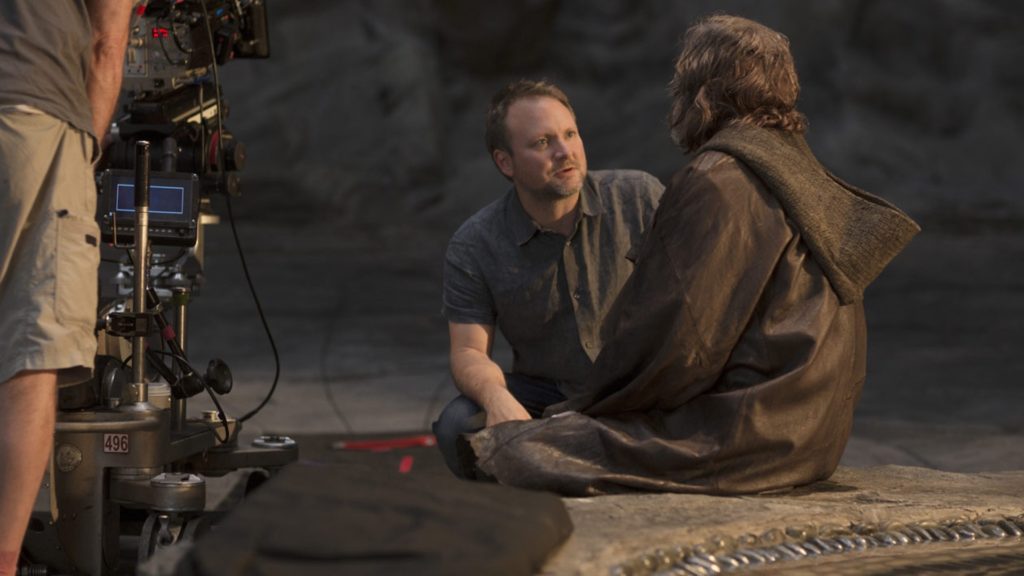
17) Rian Johnson – Rian Johnson simply never understood Star Wars. What he understood was his weird quirky indie film sensibility and he used Star Wars as a trojan horse to give one of those indie stories the big-budget treatment. The result was a couple of memorable moments, but overall, a complete misread of the mythology, which culminated in the assassination of the series’ lead character, Luke Skywalker. If that wasn’t bad enough, he gave the series nowhere to go in the final film, forcing JJ Abrams to bring back a dead bad guy. Johnson is one of the worst decisions the Star Wars brand has ever made.
16) Finn – Let’s be honest. Finn ended up being a disaster. And it didn’t help that the actor who played him, John Boyega, had a public meltdown in the middle of it all. There’s so much that went on here, it’s hard to pinpoint where the blame lies. But I think I have to blame Rian Johnson. JJ clearly had a bigger story in mind for Finn. Rian, meanwhile, had no idea what to do with him. So he forced a love story onto two characters with zero chemistry. Word on the street is that JJ wanted Finn and Rey to end up together but Disney said no because he was black. It’s up to you if you decide to believe that. But clearly all sorts of behind-the-scenes issues contributed to this character imploding. Cause he was actually kinda cool in the first film.
15) Poe Dameron, Jyn Erso – Never have two characters lacked personality more than these two. They were soooooo so so so very boring. Just writing their names down made me bored. Jyn Erso is an interesting case because word on the street is that the original performance of the character made her seem like a b*tch. So they took out all of the b*tchy moments, which is why the character seems so lifeless. Cause she wasn’t allowed to display emotion. Poe is different in that he’s a high-energy guy. So he *should* be exciting. Yet he, too, was boring. I think in JJ’s attempt to not make him a Han Solo clone, he stripped away any negative sides to Poe, and, in the process, stripped him of the duality many characters need to come across as complex.
14) Cassian Andor – Never have I seen a franchise try to push a character who didn’t deserve it more than Star Wars has tried to push this character from Rogue One. The character is weak. The actor isn’t very good in the role. Literally nothing about the character pops off the screen. And now we’re going to get an entire series of him! Talk about a weird decision. The series is being written and directed by Tony Gilroy, who’s openly admitted he doesn’t even like Star Wars! So we’re getting a show about a character nobody likes written by a guy who doesn’t like the world the character exists in. Buckle your seat belts for six episodes of bounty hunting boredom.
13) Kathleen Kennedy – You can’t completely poo-poo what Kennedy achieved. She picked the perfect director to bring the series back to life, which resulted in an unprecedented 2 billion dollar box office haul. She’s also spearheading a gigantic property that has a lot less certainty than her in-house sibling, Marvel. Those guys just have to find a popular comic run and turn it into a movie. Star Wars is much more of a guessing game. And that’s the problem. Kennedy doesn’t understand Star Wars and therefore guesses badly. I don’t know if “Solo” would’ve been a masterpiece had Lord and Miller not been fired by Kennedy. But I know for a fact it would’ve been better than that vanilla ice cream excuse of a movie they came up with. Kennedy just doesn’t “get it,” and it seems that whenever Star Wars has a hit, it’s because of someone else, not because of her.
12) Dave Filoni – I go back and forth on Filoni. I know there isn’t a bigger Star Wars fan in the universe. And I love the story of him moving up the ladder from a research assistant at Lucasfilm to directing live-action episodes of Star Wars. I can only imagine how exciting that must have been for him. Here’s my issue with Filoni though. It seems as if the only reason he got the job is because he was the only person in Lucas’s orbit who unabashedly liked the prequels. Lucas got hammered on those prequels so much that meeting someone who actually liked them created a Stepbrothers moment (“DID WE JUST BECOME BEST FRIENDS??”). From that point on, he was pretty much anointed a superstar in the company. And he could do no wrong. Therefore, even though he’s achieved great things at Lucasfilm, you still get the feeling whenever you watch one of his episodes that you’re dealing with a fanboy as opposed to a director. I’m just not convinced he has any creativity of his own. And the fact that he tried to kill the biggest thing to come out of Star Wars in 20 years – Baby Yoda – makes me even more skeptical of him.
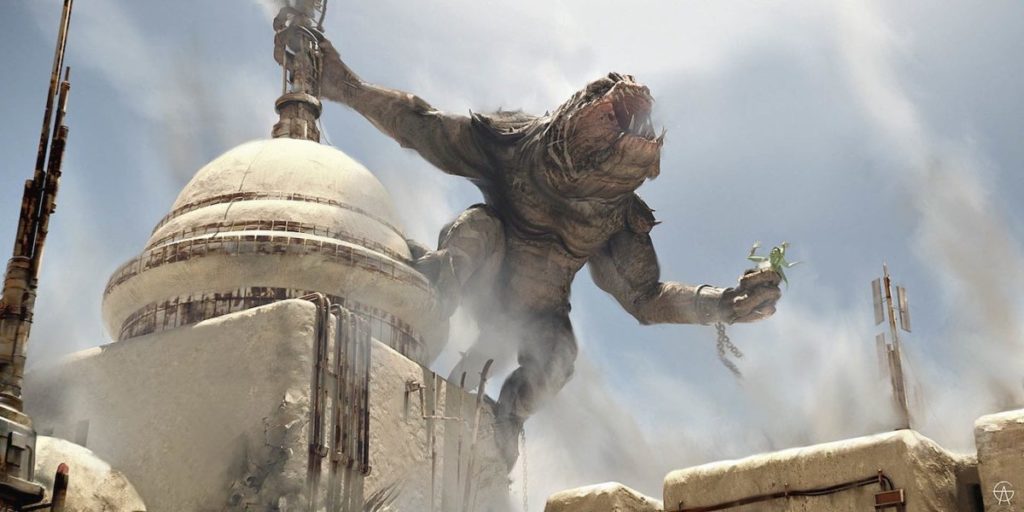
11) Boba Fett Show – Trying to consolidate my thoughts about the Boba Fett show is like trying to consolidate my thoughts about the evolution of the Sports Illustrated swimsuit issue. There’s too much to wrap my brain around. The show, at one point, DITCHED BOBA FETT! For two episodes it just said, “Byyyy-yeee” to its main character! At the same time, it gave me Jabba The Hutt’s twin cousins and Boba Fett riding a Rancor! I don’t hate this show. Yes, I do hate this show. No I don’t. Yes I do! If we’re being totally honest, I don’t think they had any idea what they were doing when they made this show. But it’s got some cool moments and that final episode was pretty darn entertaining.
10) Snoke – While I didn’t love Snoke at the outset, I began to warm up to him. And I thought some of Rian’s best stuff in Episode 8 was Snoke. Until he killed him off. I still contend that there was stuff you could’ve done with this character. I’ve always loved the idea of a crazy Sith hiding out in the Outer Rim, waiting for his moment to take over the galaxy. But Rian ruined all that. I’m guessing this is one many Star Wars fans will disagree with me on. But I always thought Snoke was pretty cool.
9) JJ Abrams – Now that I’ve had a little distance from the new trilogy, I don’t see JJ with the rose-colored glasses I did at the time. But I still think he made a fun first movie that recaptured some of the magic that had been lost in the prequels. Those early scenes of Rey struggling to survive on Jakku worked well. And JJ understood something key about the original movies, which is that they all moved quickly. I also thought he did an amazing job salvaging the franchise from the sarlac pit Rian Johnson hurled it into. That the final film was even cohesive is a testament to his understanding of story.
8) The Mandalorian (The Character) – What’s so interesting about the Mandalorian character is that he’s not very interesting on his own. How can he be? We never see his expression. And he doesn’t talk that much either. A lot of who he is is expressed through his relationship with Baby Yoda. And just the fact that he will fly to the ends of the galaxy to protect this guy makes The Mandalorian lovable. There’s still some weird stuff going on behind the scenes about Pedro Pascale not wanting to wear the helmet and that ruining the climax of the second season when he takes his helmet off (since he already took it off two episodes prior). But there’s no doubt that the character is near the top of the list in the post-Lucas Star Wars rankings.
7) Rey – I always liked Rey. I just never loved Rey. But she was a great underdog character to pin the story on in the first film. And one of the things I thought Rian Johnson did right was the sexual tension he built between Rey and Kylo in the second film. It was a good evolution of her character, and a little unexpected, especially from Captain Bad Idea. Ultimately the character’s inner journey became muddied and we weren’t really sure what she was after. I mean, yeah, she wanted to know who her parents were but since so many people kept coming in and out of the creative process, that revelation kept changing, and you could see it in the way Ridley played the character. With that said, I still think the character was a success.
6) The Mandalorian (The Show) – The Mandalorian show was, without question, a major step forward for the franchise. It proved that you could make Star Wars on a TV budget, even if it was a juiced up Disney Plus TV budget. I think someone said in that article that you’re making Star Wars shows on 1/5 of the features’ budget in 1/3 of the time. You wouldn’t think so watching any of the Mandalorian episodes. And the show introduced this new digital background technology that’s changing the game not just for Star Wars but for all of filmmaking. Not to mention, it had some really fun episodes. My favorite was the one where the Jawas stole the Mandalorian’s ship parts.
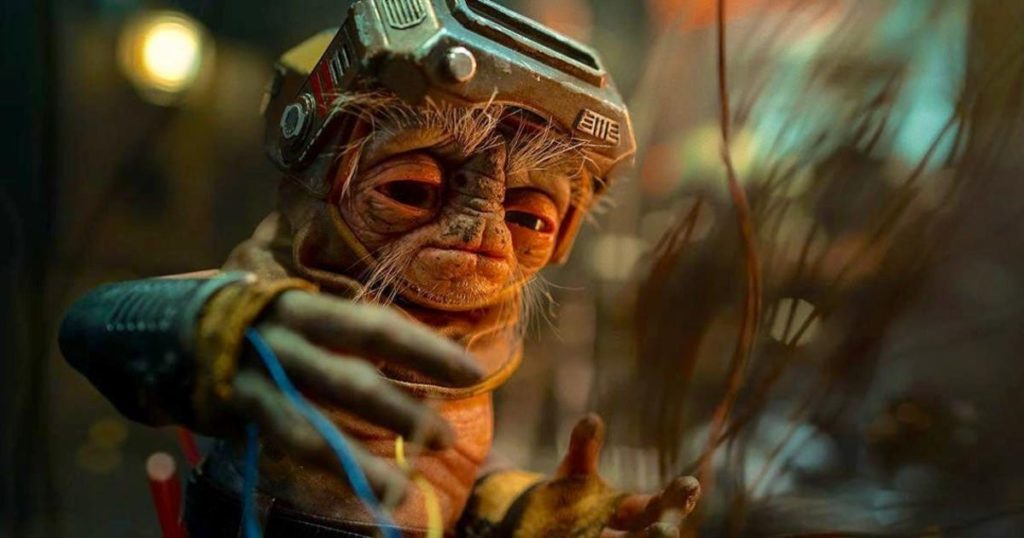
5) Babu Frik – One of the hardest things on a Star Wars production must be when you’ve put everything together and a character who you didn’t think much of at the time turns out to be an amazing breakout character, yet you don’t have the time left to expand their role. Babu Frik was that character in Episode 9. He was so fun. If you could’ve put him on the mission with the guys, he would’ve been comedic gold. Instead we get the giant packet of boring sauce that was Zori Bliss, who had about as much humor in her entire existence as Babu Frik had saying his name out loud. JJ’s ability to create these fun little characters was highly underrated (he did it with D-O as well).
4) BB8 – BB8 was Baby Yoda before Baby Yoda. I remember when I saw that famous Thanksgiving weekend trailer JJ surprised everyone with which featured that shot of this soccer-ball droid shooting across the desert landscape and thinking, “Oh my god. He’s done it! He’s given us a brand new Star Wars story!” It was so exciting. And it was one of the things in the original film that lived up to the trailer. The only thing I don’t like about BB-8 is that there isn’t a Saturday morning cartoon about him and Baby Yoda going on a road trip across the galaxy.
3) Jon Favreau – Jon Favreau is the guy Kathleen Kennedy needed from the start. If he was there giving her advice from the outset, we might’ve seen a completely different trilogy. But Favreau was not the force he was in the industry in 2015 and had to fight his way up through the Star Wars ranks, to get where he is now, which is unofficially running the TV side of the Star Wars universe. I don’t think Favreau is perfect. But he, all by himself, conceived of the first Star Wars character since the original trilogy that became part of the public zeitgeist, in Baby Yoda. For that choice alone, he’s gotta be near the top of the post-Lucas Star Wars rankings.
2) Kylo Ren – Behind that bundle of green joy, Kylo Ren is the biggest risk the post-Lucas franchise took. He’s this young whiney leader of the galaxy. It doesn’t make sense. But you know what they say about big risks? They have big payoffs. The unpredictability of the character brought something new and exciting to the Star Wars universe. We were used to Darth Vader, a guy who was structured and thoughtful about everything he did. Kylo was emotional and impulsive. I loved what that did for the series. It could be argued that Kylo Ren saved Star Wars. If they had gone with a more traditional villain, the trilogy might have been so boring that the franchise was permanently scarred. He’s such an interesting Star Wars character, Kylo. Also, JJ gets major major Star Wars points for casting Adam Driver.
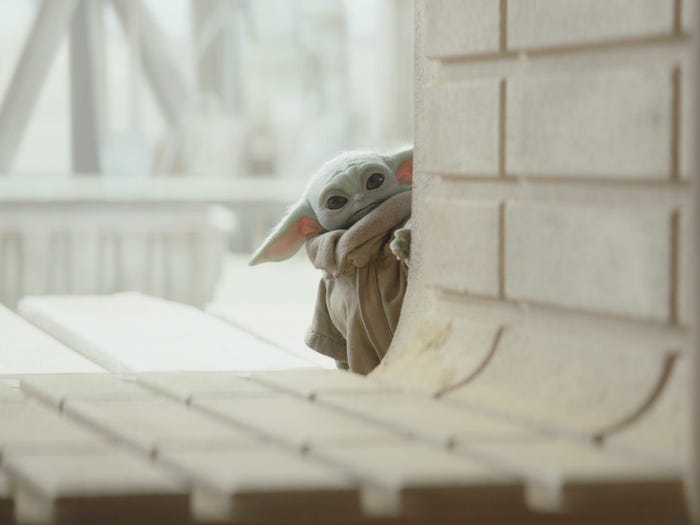
1) Baby Yoda – If there’s one thing everyone can agree on, it’s Baby Yoda. He’s just wonderful. And adorable. This is how I know this character is amazing. I have a friend who haaaaaa-aaates Star Wars. Hates it with every bone in her body. Yet *she* was sending me Baby Yoda memes during The Mandalorian’s run. Seeing Baby Yoda raise his little cute baby claw and channel the force to crush a giant robotic tank — the performance they’re able to get out of that little puppet warms my soul. It really does. It brings me back to the original Star Wars where everything was practical and that practicality contributed to making the universe feel real, because it was real! If you were on set, you could touch it. Favreau understood that. And it’s led to the best thing Star Wars has given us in decades.
Genre: Thriller
Premise: A year after her husband’s death, an adrenaline junkie rock climber finds herself being hunted by a serial killer during a canoe run.
About: This script finished in the bottom half of last year’s Black List. Screenwriter Jeremy Robbins did some writing on the TV show version of The Purge.
Writer: Jeremy Robbins
Details: 96 pages

These scripts are strange beasts.
They’re tailor-made for writing on spec because they’re simple, easy-to-understand, and effortless reads. You can basically keep every paragraph at 2 lines or less.
But they’re deceptively hard sells when it comes to turning them into movies. I just read a really good one recently for a consultation and I’ve been helping the writer send it out. And the note that I’ve gotten back is that it’s “too small.” More specifically I keep getting told that when it comes to action, audiences want that action to be bigger. They don’t want small action. They don’t want one person running from nature, or running from someone else.
So, for these to work beyond getting recognition as a script, they need to have some super marketable angle. A good example would be “The Shallows,” that script about the surfer on the private beach who gets stuck on a rock with a shark swimming around. The shark angle made that marketable.
But hey, who’s to say what anyone will fall in love with, right? Maybe there’s a rock-climbing production head out there dying to make a movie like this.
When we meet 30 year old Sasha, she’s climbing a rock face that would make Alex Honnold anxious. She’s doing so with her husband and I don’t think I need to get into specifics for you to know what happens next. Anybody seen Cliffhanger?
Cut to a year later, after her hubby, who’s name was Tommy if anybody cares, died, and Sasha has become the female version of Alex Honnold, riding around solo in a van, doing the things that adrenaline junkies do. But one thing she doesn’t do anymore is climb rock faces. She’s retired that sediment of her adrenaline-infused life.
Currently she’s about to do a 30 mile solo canoe ride through a very dangerous river. About a mile into the route, however, she notices something very wrong with her canoe. She pulls herself onto shore and sees that someone DRILLED HOLES into her canoe. What in the heck? An hour later, she’s heavily vomiting. Someone poisoned her water!
Sasha comes to the conclusion that while she was camping last night, somebody sabotaged her stuff. And it isn’t long before the saboteur shows up. It’s our Caucasian male villain, Ben, who either is a park ranger or pretended to be a park ranger when Sasha ran into him a day ago. And now he’s hunting her!
Eventually, Ben captures Sasha and makes her climb a rock face with her, before entering a hidden cave. It’s here where Ben keeps his victims, a sort of beautiful cavern with drawings on the walls that have to be thousands of years old.
To make sure she doesn’t escape, Ben handcuff-connects the two with a chain. But that doesn’t stop the feisty Sasha from trying. When he least expects it, Sasha makes a break for the exit, pulling the stumbling Ben along, then leaping off the rock face into the river below.
Ben is eventually able to subdue Sasha once more. But now they’re both injured and need to get medical attention. After deducing where they are, Ben calculates that the fastest way out of the gorge is up a nearby rock face that the two will have to free-solo to the top, connected by rope that ensures if one of them falls… both of them fall.
Today’s script is an interesting comparison piece to yesterday’s script. Because while I did like Apex, I didn’t like it as much as The Bee Keeper.
I asked myself why. Because today’s script is actually a lot more believable than yesterday’s script. I mean yesterday’s script was about bee keeping assassins who use pollen and honey as weaponry.
It goes right back to emotion. Emotionally, I cared more about the characters in The Bee Keeper than I did Sasha.
But why? The entire first scene shows Sasha losing her husband, the person she loves more than anything in the world. Why would I feel more emotion towards a bee keeper getting revenge for a dead neighbor than I would a grieving widow?
The first answer came to me quickly. Unlike in The Bee Keeper, there wasn’t a single reason to show the opening scene of Sasha losing her husband OTHER THAN to make us feel sympathy for her. The trick with mining emotion is that it cannot be obvious that you are manipulating the audience. And this was so so so so so obvious. “PLEASE LOVE MY MAIN CHARACTER! LOOK AT HER LOSE HER HUSBAND RIGHT IN FRONT OF YOUR EYES!”
The reason The Bee Keeper works better is because the opening scene doesn’t just mine emotion from Eloise’s death. It ALSO sets up the plot. Eloise loses money to this company. So that’s the company that the bee keeper goes after. That’s the advantage of doing 2 to 3 to 4 things in a scene, is that it makes the scene more relevant to the overall movie, and therefore less susceptible to looking like a blatant attempt to mine emotion.
It’s no different than when you have a lot of exposition to get out, so you write a scene that’s ONLY ABOUT THAT EXPOSITION. Every reader who reads your script knows you only wrote that scene to get all that exposition out because that’s the only thing the scene focuses on.
As a screenwriter, you have to learn to hide those things.
This goes back to my theory I was positing yesterday. If we’re not hooked emotionally, we’re not going to love your script. We might still LIKE your script. As was the case here. But rarely in the history of movies do people love movies that they’re not emotionally connected to.
The reason I still liked this script is because the technical execution was very strong. I particularly liked that the writer kept changing things up. For example, Sasha evades Ben for a while, then is captured by Ben for a while, then she tries to escape with Ben attached to her (something I’ve never seen before), and finally she and Ben have to work together.
Also, I thought it was clever how the writer exploited his premise. The hook here is the rock climbing aspect. And he gives us some fun rock climbing set pieces, the highlight of which was the free-solo climb with the two connected together so if one screwed up they were both goners.
The writer was also very good at creating suspense. Ben doesn’t just show up out of nowhere. We see a drone that Sasha doesn’t see 10 pages before he arrives. We experience the deliberately drilled holes in her canoe. A lot of writers don’t have the foresight or the patience to slowly build towards an arrival. They just want to jump to the good stuff! YEEHAW! And that’s not as interesting, in my opinion.
But like I said, these are weird scripts. They’re actiony enough to read fast on the page, but put them toe-to-toe with a film like Nobody and its cool-as-f**k bruiser bus battle and they feel small. And as much as I’d like to say I’m not one of those people, I do occasionally run across these “thriller in a forest” posters when I’m scrolling through Netflix or Prime and I think, “Ehhh… feels kind of small potatoes.”
Let me turn the question over to you guys. Do you watch these films? Or do you find them too small?
[ ] What the hell did I just read?
[ ] wasn’t for me
[x] worth the read
[ ] impressive
[ ] genius
What I learned: When you’re describing a character, try to find at least ONE VERY SPECIFIC THING that can give us insight into the character. Because if you describe a character too generally, like with one of these types of descriptions – “JOE, 27, is a bear of a man who looks like he’s had a rough life,” – we don’t get a good sense of what’s unique about that person. Check out how Robbins describes Sasha’s husband: “Inside the second sleeping bag is TOMMY (30s). A SF GIANTS BANDANA is wrapped over his face, a makeshift eye-mask.” Even without describing Tommy himself, we get a sense of this guy. He’s from San Francisco. He’s a sports dude. That’s telling me more than some generic cut-and-paste description that I see in 90% of all other scripts.
Finally! The Bee Keeper script is here!
Genre: Action-Thriller
Premise: When his elderly neighbor is duped out of her entire life savings by online scammers and subsequently commits suicide, a bee keeper goes on a rampage to take the scammers down.
About: Yeah baby! Bzzzbzzzbzzzz! We’ve got a spec script that sold for over a million bucks. We’ve got Jason Statham playing the lead. David Ayer just signed on to direct the film two weeks ago. This is the kind of script writers who want to make a big splash in the business should be writing. Tyler Marceca just made a million dollars for a fun action thriller, Stay Frosty. Shay Hatten blasted onto the screenwriting A-List when he wrote a fun action thriller in Ballerina. This is a very lucrative genre for a screenwriter. And if you want to study someone who does it best, read Kurt Wimmer’s scripts. They’re some of the easiest funnest specs you’ll ever read.
Writer: Kurt Wimmer
Details: 106 pages
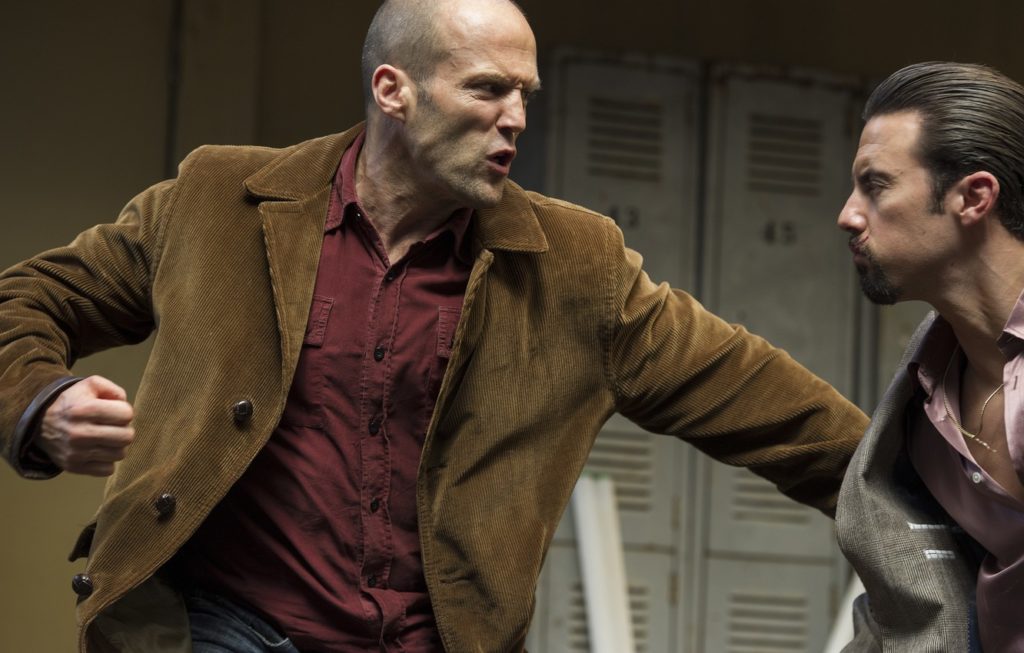
I’ve been really excited for this one.
Not only is it written by one of the most successful spec screenwriters of all time, Kurt Wimmer. It’s such a weird subject matter that my curiosity meter is off the charts. An action thriller…. About a bee keeper? Tell me more, please!
An old woman in rural Tennessee named Eloise is on her computer when she gets one of those spam warnings that most people ignore (“Your computer is infected. Call this number to fix it.”). Unfortunately, in an attempt to fix her computer, she calls the number. Within 5 minutes, her entire life savings has been stolen. That night, Eloise commits suicide.
The next day both her FBI agent daughter, Verona, and her reclusive bee keeper neighbor, Adam Clay, who she was friendly with, show up. After they both learn the truth, that a company located in Memphis called “Data Group” did this, Adam shows up at Data Group’s building the next day and burns it down.
Data Group, as it turns out, is a branch of a much larger corporation called Evermore Enterprises, run by the former director of the CIA, Westwyld. And when they find out some dude just burned down their building, they send four heavies to take him out. Except they do not “take him out.” They get taken out in some of the best action-fight writing I’ve seen in years.
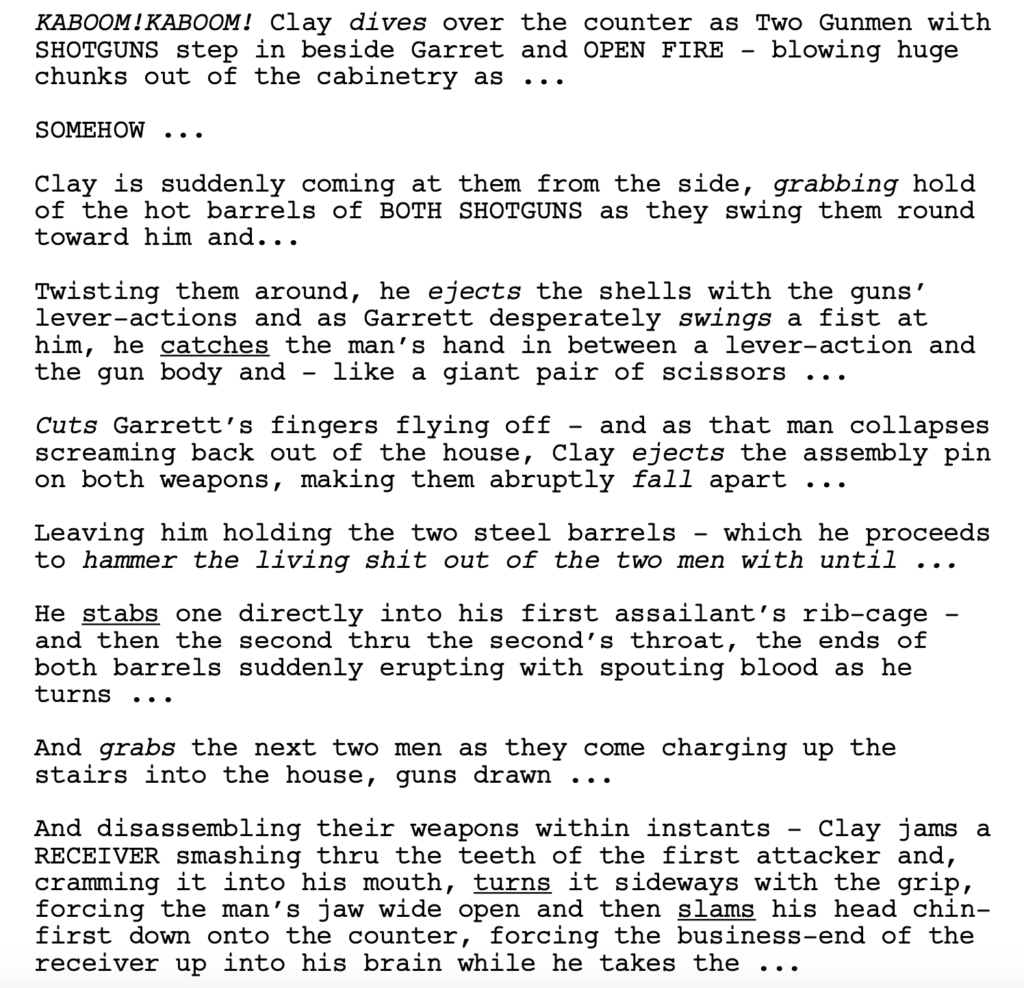
Clay then calls Westwyld and tells him he’s coming for him. It is then that Westwyld realizes he is not dealing with an ordinary man. He’s dealing with a “bee keeper.” No, not a bee keeper in the traditional sense. A type of secret agent that is so top secret not even the freaking president knows who he is. These beekepers are part of a larger “hive” who keep the country running by any means possible. I’ll let Westwyld explain…
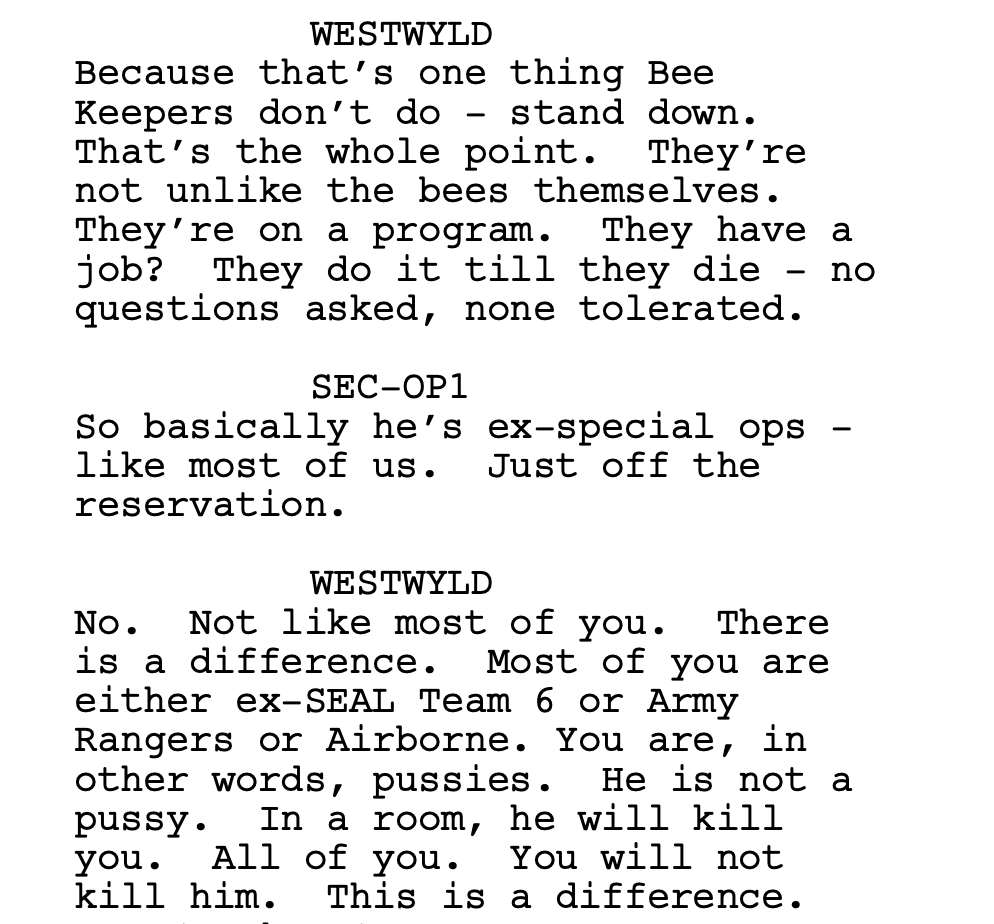
This forces Westwyld to ask for help from the Secretary of Defense! Who says that the only way to stop a bee keeper is with another bee keeper. Which they reluctantly agree to deploy. And this is where things get crazy, lol! When bee keepers fight each other, they use honey, they use bee puns, they use bee tactics. It is truly a marvel to behold. To say anything more about this script would be to betray the joy of reading it yourself. So find it and read it now! I’m sure someone in the comments can send it to you.
Hoooo-weee! I can’t remember the last time I forgot I was reading something. I totally forgot I was reading a script while reading Bee Keeper.
That’s because Kurt Wimmer is a master at writing spec scripts. And take note of the “spec” part of that declaration. There’s a difference between being great at writing a script and being great at writing a spec script. With a spec script, you have to keep a tighter grip on the reader. If you try to take your time and build something up for 15 pages without anything interesting happening in the meantime, you’ll lose the reader.
Wimmer understands this better than maybe any screenwriter in the business. Not only does he make sure each page keeps you reading. He makes sure before he’s even written a word that the concept and execution are going to create enough situations where he can keep you invested all the way through.
Beginner and even intermediate writers will decide to write a script with no idea if they can keep it entertaining the whole way through. They’re hoping they’ll figure it out “along the way.” Great screenwriters suss this stuff out ahead of time. Wimmer clearly did that here.
I don’t know why I’m surprised but I saw so many things here that were smart. For example, Wimmer does something really complicated in the screenwriting world with effortless ease. He has to make it make sense that Adam Clay will put his entire life on the line to get revenge on these people. And he has to do that through Adam’s connection with Eloise.
The problem is, he has to kill off Eloise quickly because she’s the inciting incident for the whole movie. Her death is what propels him to go on this journey. So he only has a brief amount of time to create a relationship between the two that emotionally resonates.
Complicating this is that you want to start these scripts off BIG. It’s an action-thriller. Starting with a character scene is not the best idea. So that was the puzzle Wimmer was challenged with solving.
What he did was he created this slow opening character scene between Clay and Eloise by inserting a problem – she had a wasps’ nest in her house. This allowed Clay, who’s a bee keeper, to come take care of it for her.
Now one of the tricks you can use to make a slow scene interesting is teaching us something interesting during it. Which is what Clay does. He explains what’s going on with the wasps. He tells us that wasps destroy beehives. Which is why it’s best to terminate them. We show him do some very technical interesting things to destroy the wasps’ nest, allowing us to both learn something cool and establish a relationship between these two so that we understand why he goes after the bad guys later.
On top of all this, we’re learning who our hero is. What he does.
The best scene-writing, especially in the first act, does multiple things at the same time. And Wimmer is doing that on expert-mode here. But he’s not just achieving that. He’s achieving it invisibly. We don’t see any of the mechanisms that are creating this effect because they’re seamless and invisible. That’s great writing.
He also does something really clever with the bad guys. Sometimes we can get lost in trying to create an interesting bad guy. But you can make that job a lot easier on yourself by doing what Wimmer does here – creating a villain with “built-in hate pedigree.” The villain is a scammer (everybody hates scammers) and not only that, but they target the elderly (everybody hates people who take advantage of the elderly).
So before we’ve even met our scammer, we hate him. And that does SO MUCH OF THE WORK FOR YOU when you write the script. Because if we hate the villain, we’ll almost want to keep reading to see them go down MORE than we want to see our hero achieve his goal.
I can’t emphasize this enough. The big secret hack when it comes to writing great screenplays is to make the reader feel EMOTION. Once you have a reader emotionally invested — actually, hold up, let me think about how to phrase this…
You know how when you meet someone who you really really like and want to be with? All you can think about is them and being around them? That’s because you’re emotionally hooked on that person. They’ve triggered you on an emotional level.
It’s the same idea with a screenplay. Just like you can’t convince a person to like you logically, you can’t convince a reader to like a script because you’ve done everything the proper way it’s supposed to be done.
You hook the reader by making them feel something. As strong as you can make them feel it. And we feel it here immediately when we have this nice old lady get taken advantage of by these terrible people. And we’re in! That’s it! We’re in. We want to see that person go down. Which is why this script works so well.
The rest is gravy. It’s a fun ride where this guy tries to kill the bad guys.
The only thing I didn’t like about this script was the idea that there was no recourse for someone illegally jacking into your bank account and transferring all of your money out of it without your permission. Especially when you consider that the woman’s daughter was a federal agent! Talk about kicking the hornet’s nest. The FBI would be able to take this enterprise down within 72 hours.
So I didn’t like that. But crazy enough, the writing was so darn amazing that I didn’t care. It was such a fun exciting and FUNNY ride. I loved this quirky concept of a bee keeper taking the bad guys down. It was so different. And the mastery of Wimmer just made it a dream read. Every screenwriter should read this script to see how to make their own scripts read. It’s truly impressive stuff.
[ ] What the hell did I just read?
[ ] wasn’t for me
[ ] worth the read
[x] impressive
[ ] genius
What I learned: This is a little dialogue trick I’ve learned that always works in scripts like this. The formula goes something like this. Your hero approaches one of their targets and runs into some foot soldiers (guards, heavies, in this case, security) and the foot soldiers ask what your hero is doing here. There’s a tendency to think logically about how your hero will answer that question. They might say, “I have an appointment here and I’m late.” Maybe he tricks them by calling a fake number and letting them talk to the person to “confirm” that he indeed has an appointment. But where’s the fun in that? Instead, when Adam Clay goes to the Data Group building and encounters security outside and they suspiciously ask him what he’s doing here, he responds, “If this is Data Group – the call center – I’m going inside. I’m going to burn it down.” In other words, have your hero say EXACTLY what he’s going to do. You can do this anywhere. If you’re writing a movie in the 1700s and a William Wallace like character walks up to the castle and the guards say, “What do you want?” “I’m planning on walking into your castle here, heading up to the king’s throne room, and gut him before cutting off his head and tossing it out the window.” I’m telling you, it works pretty much every time.
The team that brought us Arrival, Ted Chiang and Eric Heisserer, is back with an adaptation of another one of Chiang’s stories.
Genre: Drama/Light Sci-Fi
Premise: After being released from a mental hospital, a brilliant mathematician comes up with a theory that could destroy the entire mathematical field.
About: This project just came together recently. It reteams author Ted Chiang with Eric Heisserer, who adapted his short story, The Story of Your Life, into the surprise hit sci-fi film, Arrival. Heisserer will be producing this time around. Henry Dunham, who directed the super-interesting (and killer script), “The Standoff At Sparrow Creek,” will be adapting and directing. This comes from a story that Chiang wrote all the way back in 1991. You can read the short story for yourself here.
Writer: Ted Chiang
Details: 5500 words (for reference, a screenplay is a little over 20,000 words)

I have to give it to Eric Heisserer. He’s the one who saw something in “Arrival” that no one else did. Because when you read Ted Chiang’s stories, it is not an effortless experience. His stories tend to be vague, metaphorical, and feelings-based rather than having some clear plot that one could easily sculpt a feature film out of.
That is, without question, why we haven’t heard of anything from Ted Chiang since Arrival. As soon as that movie became a hint, Hollywood scoured through all of his short stories, of which there are many, and came away with bupkis. They just couldn’t find anything.
That’s why this development is so interesting to me. For one, it says that if there’s one person who knows how to figure Chiang out, it’s Heisserer. He’s the guy who can get into his head and know how to bring one of these weird stories to life. And two, this is one of Chiang’s earliest short stories. He wrote it all the way back in 1991. That implies that maybe this is one Hollywood missed when they went digging into Chiang’s work – a gem just waiting to be plucked and sold at Sotheby’s for tens of millions of dollars.
We shall find out together if said belief is true.
Our story follows a 32 year-old mathematician named Renee, who’s just been released from the mental hospital for unknown reasons. She heads back home with her supportive husband, Carl, and immediately gets to work on a mysterious new mathematical theory.
The tale is told in mini-chapters roughly 250-500 words long. Between each chapter is a history lesson on how math has evolved throughout the centuries. A recurring theme in these “Did You Know?” snippets is the idea that arithmetic has never entirely been proven infallible.
Back at home, Renee, for whom happiness is so foreign it appears she’s never so much as giggled in her life, spends the majority of her time in her office, working on this math theorem. Carl, in the meantime, starts to wonder if he actually likes his wife anymore. I would counter that by asking Carl why he liked Renee, you know, in the first place.
Around this time, we get some odd backstory that Carl was once in a mental hospital in his early 20s as well! And Renee had been there for him, nursing him back to health after he’d tried to commit suicide. I think the point here is to create this dynamic by which Carl can’t leave Looney Renee since she was there for him during his time of need.
I’m sure you’re all wondering what this theorem is that Renee came up with. My decision to create some suspense before telling you is far more of an attempt to entertain the reader than anything I read in this short story.
The theory Renee proves is that all of arithmetic is false. She has proven that the number 1 can equal the number 2. Not only that, but that any number can equal any other number. And, therefore, there is no such thing as math. Everything we have built our world around is false. Or something. The End.
 Amy Adams completing the band getting back together?
Amy Adams completing the band getting back together?
Sorry.
I couldn’t hide my disgust for this story in the summary.
Here’s the thing. I’ve read so many of these “the world is the universe is math is numbers equals equations that kind of sort of explain the meaning of life” stories and they never ever deliver. Because they can’t.
You’re not going to be the writer who figures out something about math that nobody’s ever figured out before and then lay it out in a fashion that is going to be anything other than vague, frustrating, and, ultimately stupid. Go watch Interstellar if you don’t believe me.
I guess the question is, does Heisserer plan on using Division By Zero as the starting point of an idea or the idea itself? I would posit that he approach it as a starting point. Because two people fumbling around their house talking about mathematical equations and also remembering suicide attempts isn’t compelling storytelling.
What I’m hoping for is that this is the kernel for a much bigger story Heisserer has in mind. Because if you extrapolated someone disproving math to affect the entire world, there might be a movie there – another “thinking man’s sci-fi movie” like Arrival was.
For example, maybe this is a mathematical proof that, if it was released into the world, it would cause complete chaos, since no form of math matters anymore. But let me stress that nothing like that was ever mentioned in the story.
In fact, in the short story, Renee publishes her proof and a bunch of mathematicians collectively shrug their shoulders. That was one of my biggest problems with the story. There was zero stakes. Who gives a rat’s behind about some proof if it doesn’t affect anything??
But again, Heisserer might already feel this way and have plans to fix the issue.
For those wondering what makes a short story “adaptable,” there are two questions you want to ask yourself. 1) Should the story be adapted? This is divided by zero into two secondary questions. A) Is the concept good? And B) Are the characters worthy of building a movie around? The second question is, 2) Do you have a good angle to adapt the story into, something that can fit nicely into a feature-film structure?
So let’s quickly answer these questions. Should this story be adapted? The concept of disproving all of math has potential. So I’d say, “Maybe.” But there are zero characters in this script. Renee is way too harsh to be anything other than hated by audiences. And Carl’s just boring. So Heisserer would need to completely rewrite these characters.
Finally, is there an angle here? Again, the “math isn’t real” thing has some potential but I’m not sure I see an angle into it. You could go the stupid route of the theorem being placed on a thumb drive and everyone’s after it, some to expose it, others to keep it hidden.
You might be able to do something like Margin Call meets Don’t Look Up where we watch this theorem work its way up the mathematical world hierarchy, getting to bigger and more influential mathematicians, each of whom are terrified by the prospects of the theorem getting out and what it would lead to.
A third option – and I suspect this is the one that may have attracted Heisserer to the story – is to go the A Beautiful Mind route. There’s some stuff in the story about, is Renee going crazy or not? I suppose you could shoot for the Best Actress Oscar with that. But you’d need to find a way to make Renee at least tolerable. At the moment she’s about as relatable as a Pythagorean theorem.
In conclusion, this feels like an “almost idea.” It’s one of those ideas where you think, “Yeah, there’s something interesting in there. But it doesn’t add up to anything.” And yes, I just went there. Because 9 minus 5 still equals 4 so why not? :)
[ ] What the hell did I just read?
[x] wasn’t for me
[ ] worth the read
[ ] impressive
[ ] genius
What I learned: Despite what I’ve said today, I do think that you can mine short stories for great concepts even if the execution of the story sucks. We’re all just searching for that great idea. So if you like the core of a story but not the rest, get in touch with the writer and see if they like your idea of changing it. Remember that one of my favorite shows, Into the Night, about a group of people on a plane trying to outrun the sun, was based on the very first page of a 400 page novel and nothing more. Most writers want to see their stuff turned into TV shows and movies so the smart ones will listen to you.
What I learned 2: Avoid repeating yourself. For example, Renee attempted suicide and stayed at a mental hospital. Later we learn that Carl, when he was younger, attempted suicide and stayed at a mental hospital. Whenever the same things happen to your characters in a way that’s not necessary for the plot to work, it reads as lazy. Like you couldn’t think of anything original for the other character so you just copy and pasted. It seems as if Chiang was trying to create a dilemma for Carl in that Renee once helped him out of this problem so it is his duty to help her out of hers. But you could’ve easily achieved this by creating a separate tragic event that required Renee to help Carl. Maybe he lost his sister or something and she helped him through it. You don’t want or need to use the exact same experience.

